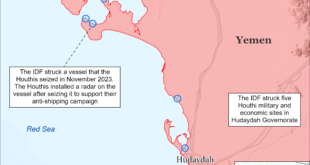 TEHRAN (FNA)- The Parseh and Pasargadae Research Foundation plans to restore the structures added to Pasargadae during the different Islamic eras.
TEHRAN (FNA)- The Parseh and Pasargadae Research Foundation plans to restore the structures added to Pasargadae during the different Islamic eras.
The structures include a mosque dating back to the 12th century CE and a Safavid caravanserai, foundation director Mohammad Hassan Talebian told the Persian service of CHN on Saturday, Tehran Times reported.
“The mausoleum of Cyrus the Great possessed a special sacredness during the Islamic era. Thus the Atabegs used the area as a mosque,” Talebian said.
Ruins of the mosque, constructed from the columns and stones of the palace of Cyrus and the Apadana Palace, remained in place until 1971 when the shah of Iran, Mohammad Reza Pahlavi, removed them for holding the 2500th anniversary celebration of Iran’s monarchy, he added.
During the time, the Italian Institute for the Middle and Far East (L’Istituto italiano per il Medio ed Estremo Oriente – IsMEO) restored the mausoleum of Cyrus the Great and the stones and columns were transferred to an area beside the Apadana Palace, Talebian explained.
Some of the megaliths, which had been used in the mosque’s transom bear inscriptions of Quranic verses, he noted.
“Many great works have been done by IsMEO in Pasargadae, but transferring the ruins of the mosque, which was from an ancient stratum, was also a great mistake and was contrary to the International Charter for the Conservation and Restoration of Monuments,” Talebian said.
According to Talebian, some of the stone inscriptions of the mosque have been buried at the site of the mausoleum of Cyrus the Great.
Pasargadae is also home to the mausoleum of Cyrus the Great, two of Cyrus’ palaces and several other Achaemenid era structures, however, due to the Islamic additional structures, Talebian believes that it is an Achaemenid-Islamic site.
The Islamic architectural structures were added to Pasargadae during the Salghurid Dynasty (1148-1270), Iranian dynasty that ruled in the Fars region in southwestern Iran as vassals of the Seljuq, Khwarezm-Shah, and Ilkhanid dynasties.
According to Encyclopedia Britannica, the Salghurids were one of several dynasties of Atabegs (notables who acted as guardians and tutors of infant Seljuq princes) who were deputized to govern Iranian provinces on behalf of Seljuq kings. The Salghurids originally belonged to the Salor (Salghur) Turkmen tribe but moved to Fars early in the 12th century.
 Eurasia Press & News
Eurasia Press & News


